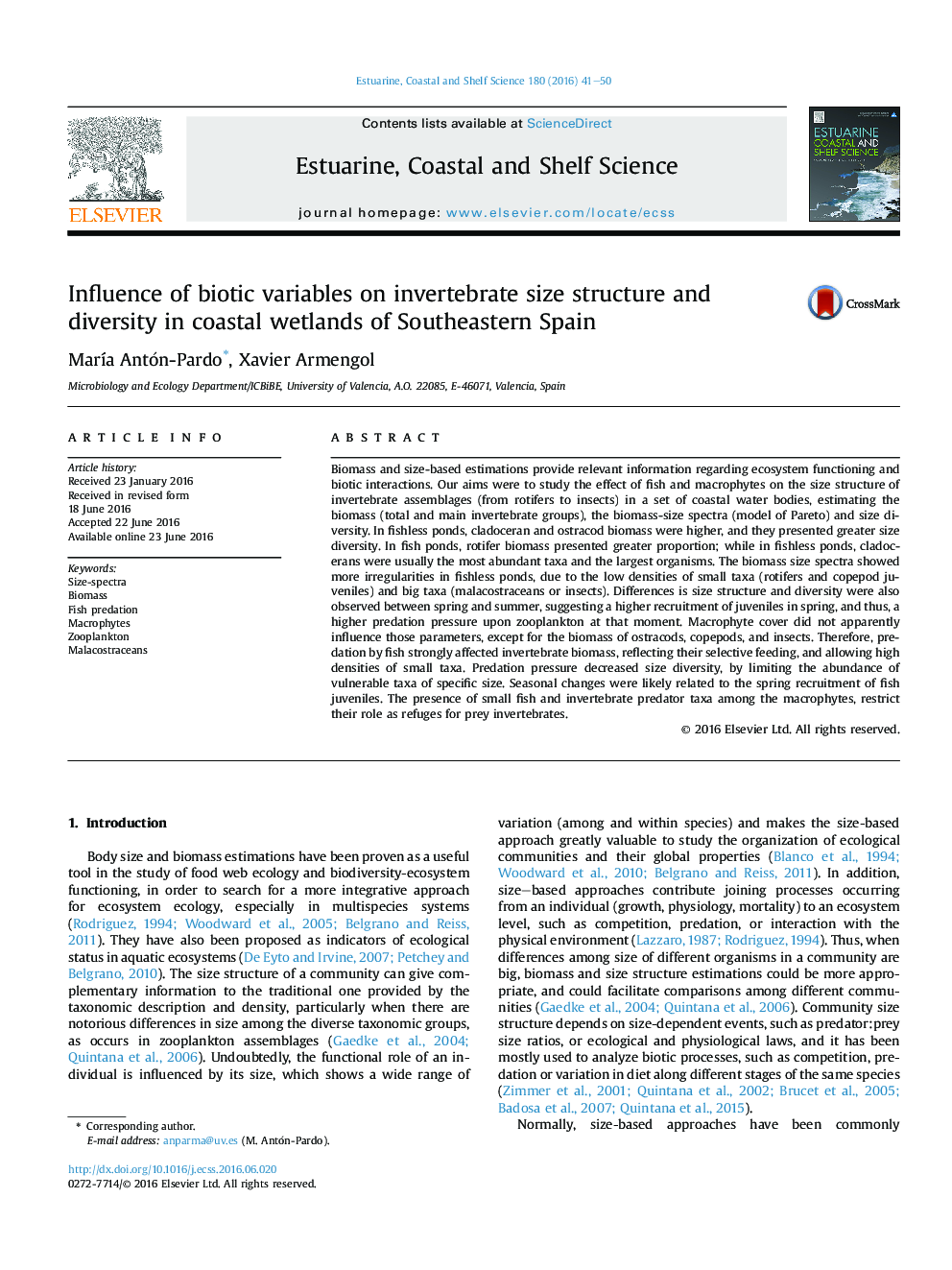| کد مقاله | کد نشریه | سال انتشار | مقاله انگلیسی | نسخه تمام متن |
|---|---|---|---|---|
| 4539163 | 1626619 | 2016 | 10 صفحه PDF | دانلود رایگان |
• Influence of fish on biomass and size of invertebrate assemblages were studied.
• Selective predation by fish decreased the abundance of a certain size range.
• Small and bigger taxa avoid this predation through several strategies.
• Seasonal changes were found, related to the spring recruitment of juvenile fish.
• The presence of macrophytes did not decrease the effects of predation.
Biomass and size-based estimations provide relevant information regarding ecosystem functioning and biotic interactions. Our aims were to study the effect of fish and macrophytes on the size structure of invertebrate assemblages (from rotifers to insects) in a set of coastal water bodies, estimating the biomass (total and main invertebrate groups), the biomass-size spectra (model of Pareto) and size diversity. In fishless ponds, cladoceran and ostracod biomass were higher, and they presented greater size diversity. In fish ponds, rotifer biomass presented greater proportion; while in fishless ponds, cladocerans were usually the most abundant taxa and the largest organisms. The biomass size spectra showed more irregularities in fishless ponds, due to the low densities of small taxa (rotifers and copepod juveniles) and big taxa (malacostraceans or insects). Differences is size structure and diversity were also observed between spring and summer, suggesting a higher recruitment of juveniles in spring, and thus, a higher predation pressure upon zooplankton at that moment. Macrophyte cover did not apparently influence those parameters, except for the biomass of ostracods, copepods, and insects. Therefore, predation by fish strongly affected invertebrate biomass, reflecting their selective feeding, and allowing high densities of small taxa. Predation pressure decreased size diversity, by limiting the abundance of vulnerable taxa of specific size. Seasonal changes were likely related to the spring recruitment of fish juveniles. The presence of small fish and invertebrate predator taxa among the macrophytes, restrict their role as refuges for prey invertebrates.
Figure optionsDownload high-quality image (150 K)Download as PowerPoint slide
Journal: Estuarine, Coastal and Shelf Science - Volume 180, 5 October 2016, Pages 41–50
